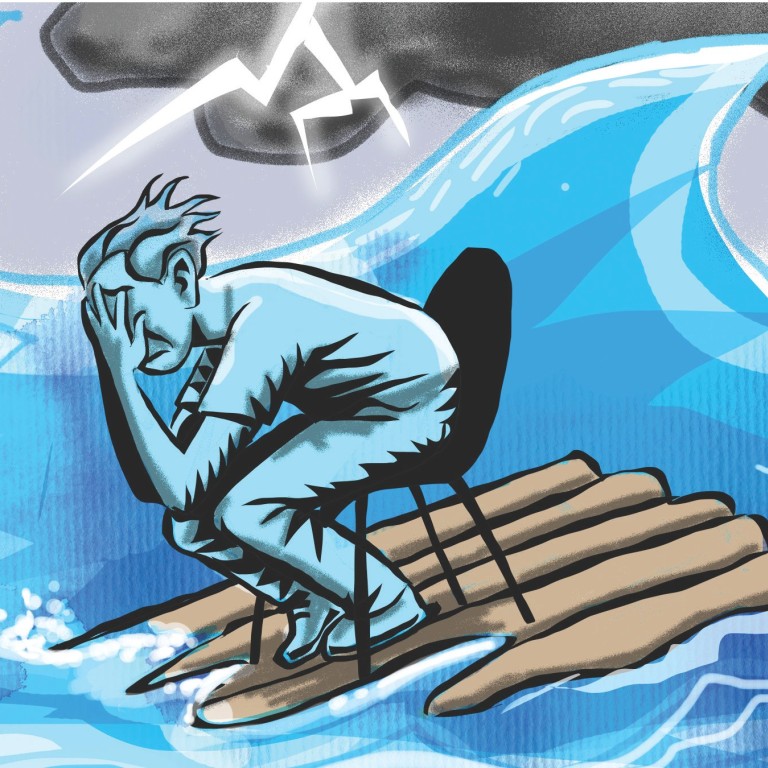
To prevent suicides, the whole community must reach out to those feeling alone and helpless
Paul Yip says while the suicide rate in Hong Kong has been declining, social isolation remains a problem
September 10 is World Suicide Prevention Day. Every year, there are more than 800,000 suicides globally - more than all the deaths arising from war and murder. A leading cause of death among those aged 15-24, both globally and in Hong Kong, suicide is a major public health concern.
Based on data from the coroner's court, the suicide rate for Hong Kong was about 12.3 per 100,000 people last year. The global age-standardised suicide rate stands at about 11.4 per 100,000 people, according to the World Health Organisation.
If we adjust Hong Kong's rate to make it internationally comparable, we find that it has been lower than the global rate for four consecutive years, and the 2014 rate was 8.6 suicides per 100,000. Compared with other developed Asian countries such as Japan (18.5) and Korea (28.9), our suicide rate was lower. It was also lower than that of some developed Western countries, such as the United States (12.1) and Australia (10.6); however, it is higher than Britain's (6.2).
Suicide rates in Hong Kong have dropped significantly from a historical high of 18.8 per 100,000 in 2003 and have maintained a downward trend. The magnitude and speed of reduction has been encouraging. This decline might be attributable to multiple factors. New outreach services targeting older adults and vulnerable youth have helped, while different stakeholders in the community are now sharing information and exchanging ideas about suicide prevention.
There has been more evidence-based research and knowledge exchange over the years. The decline in Hong Kong's suicide rate is the best proof that accumulated knowledge helps improve the effectiveness of real-life strategies.
It is encouraging to see the changes in some of these young people who have received help; some have even become volunteers themselves so they could help others
Some of our good practices, including restrictions on access to charcoal (which is used by some seeking death), reaching out to older adults, and media engagement have been endorsed and adopted by other communities.
Nonetheless, some challenges remain, especially concerning our young people. Five people below 15 years old committed suicide last year, more than in 2012 and 2013. After thoroughly reviewing the investigation documents of these cases, we found that these youths were all suffering from emotional distress before killing themselves. Unfortunately, their suicidal thoughts were not expressed out loud or went unnoticed by their family, teachers and friends.
Miscommunication and a feeling of disconnection between young people and within their social networks are not uncommon. We need better support for our young people; youth social services, for instance, should be focused more on improving communication and the problem-solving skills of service users.
According to our findings, about 30 per cent of young people aged 12-29 have experienced emotional distress in the past four weeks. Among them, 28 per cent did not seek any help. However, of those who did not seek help, 72 per cent had expressed their distress online. This shows that online platforms could provide another opportunity to reach out to this type of hidden in-need individual.
Recently, Caritas Hong Kong, the Boys' and Girls' Clubs Association of Hong Kong and the Hong Kong Federation of Youth Groups have begun to engage vulnerable youth via social media and other electronic platforms. Such methods can reach those who may be failed by more traditional means.
It is encouraging to see the changes in some of these young people who have received help; some have even become volunteers themselves so they could help others.
Our centre's research shows a link between higher suicide rates and socio-economically deprived areas in Hong Kong. This is especially the case among the young. The suicide rate was higher in areas with more low-income families, more working-class people, and more single or divorced adults.
The findings demand that we mobilise resources at a district level to bring hope to these young people. This would be the most effective suicide prevention approach. Those among our youth who are less academically inclined also need more opportunities to develop vocational skills, so as to give them hope of a better future.
If the government could raise the minimum wage, and if the business sector was willing to hire more individuals with different skills, it would not only help disadvantaged young people move up the social ladder, but also bring hope to less-privileged families. Suicide prevention, across all age groups, is not only about saving lives, but also empowering people in identifying problems, finding solutions, and bringing them hope and confidence.
Such a holistic approach will ultimately promote well-being for the whole community.
The recent tragedy of the murder-suicide case involving a father and his two young children is very unfortunate. Going through a divorce, being unemployed and needing to look after two children, including a child with special needs, might have been too much for the man to bear.
It appears he did not reach out for help, and the present system was unable to provide timely support.
Reaching out for support is not a sign of weakness; rather, it demonstrates real courage and strength to understand one's limitations and, with the help of others, to try to identify possible solutions. There are many in the community ready to help.
A single suicide is one too many. We can all be gatekeepers to reach out to those in need and inspire hope in others. Together, we can make a difference.

